
The Sonos Era 100 is the latest entry-level Sonos speaker, but should you replace your Sonos One?
Estimated reading time: 8 minutes
Sonos announced the Sonos Era 100 back in March 2023 alongside the Era 300. The two speakers defined a new era (excuse the pun) of Sonos speakers, with the Era 300 delivering a superb single box Spatial Audio offering, while the Era 100 marked the entry-level point for the multi-room speaker company.
If you’re looking to start a Sonos system and choosing between the Era 100 and the Sonos One speakers, or perhaps you’re wondering if you should upgrade your Sonos One to the Era 100, we’re here to help.
We’ve detailed the differences between the Era 100 and the Sonos One and One SL below, and we’ve added our first-hand experience of them too. There’s plenty to take note of so buckle up.
Get to grips with the new Sonos app: 14 tips and tricks to help you get to grips with the new Sonos app
Sonos Era 100 vs Sonos One: Price
The Sonos Era 100 became available on 28 March 2023, priced at £249 in the UK, $249 in the US and €279 in Europe. The Sonos One meanwhile, launched at £199 in the UK and $199 in the US when it was announced in 2017, with the Sonos One SL launching in 2019 at £179 in the UK and $179 in the US.
The Sonos One and One SL have started to be phased out with the launch of the Sonos Era 100, so while Sonos has now stopped selling the speakers, you might still find stock online elsewhere and for a cheaper price than they launched at if you shop around. Keep in mind they may be hard to find now though.
Sonos Era 100 vs Sonos One: Design and build
The Sonos Era 100, Sonos One, and Sonos One SL all offer compact designs in black and white colour variants, but the Era 100 distinguishes itself with a sleek cylindrical shape and greater height compared to the other two models.
Its modern, simplistic appearance features a polycarbonate body and speaker grille and it’s an exceptional looking speaker overall. In contrast, the One and One SL have boxier designs, with a metal color-matched grille and a thicker top, housing the Sonos logo horizontally. Whilst they still look great, they certainly have an older feel now, which is unsurprising given they launched in 2017 and 2019 respectively.
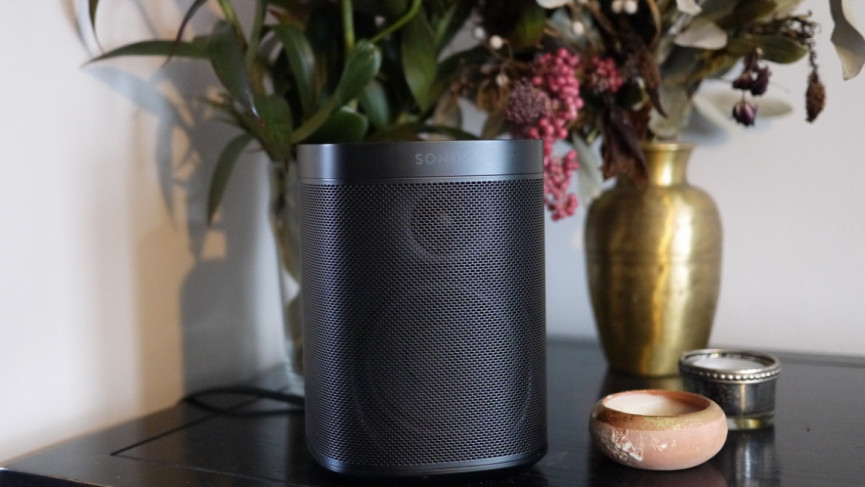
The Era 100’s capacitive controls include an indented bar for volume and separate capacitive controls for play/pause, skip, rewind, and microphone on/off. The Sonos One has play/pause and volume controls on either side, with swipe functionality for track navigation and a microphone on/off option. The One SL shares the same controls as the One but lacks a microphone control due to the absence of built-in microphones on the whole.
On the Era 100’s rear, there’s a Wi-Fi to Bluetooth switch, a microphone hardware switch, and a USB-C line-in port, with the power port located underneath. In comparison, the Sonos One and One SL feature an Ethernet port and pairing button on the back, with the power port underneath, but both lack USB-C line-in, microphone, and Bluetooth switches.
Sonos Era 100 vs Sonos One: Smart features
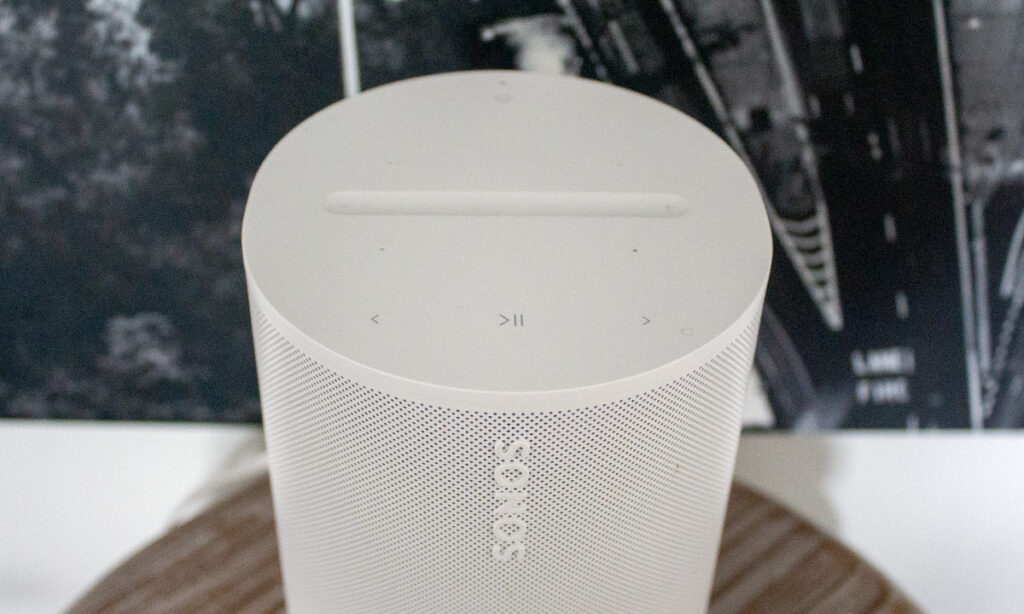
The Sonos Era 100, Sonos One and Sonos One SL share several features, though the Sonos Era 100 adds a couple of extras beyond what the Sonos One and Sonos One SL offer. As you would expect from Sonos speakers, they all include features such as EQ adjustment via the Sonos app, compatibility with over 100 music services, and the ability to function individually or as part of a Sonos system. Trueplay tuning, AirPlay 2 support, and music playback over Wi-Fi are also features available across all models.
Where things start to differ however, is the Era 100 supports Bluetooth when the rear hardware switch is set to Bluetooth mode. It also stands out with its USB-C line-in port too, allowing direct connection to an audio device like a turntable – a feature that is unavailable on the Sonos One and One SL. It’s worth mentioning that the Era 100 requires a Sonos Line-in Adapter and an auxiliary cable for this feature, however, so keep that in mind.
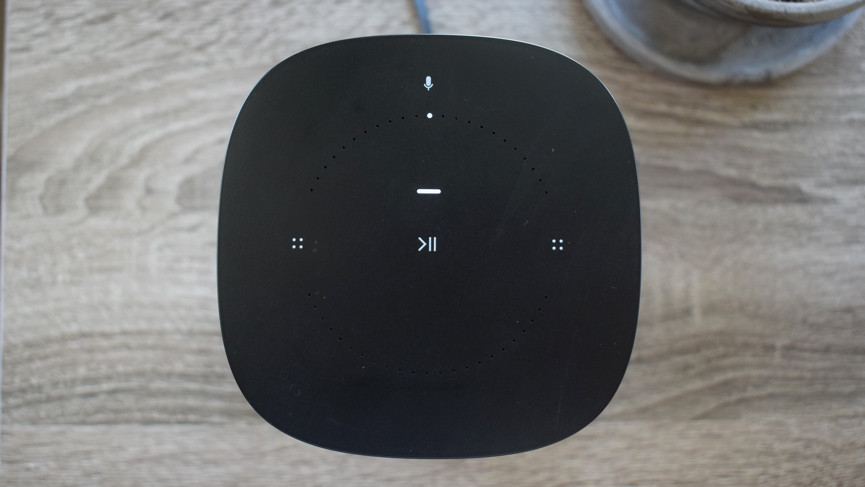
Both the Sonos One and the Era 100 feature voice control, offering Sonos Voice Control and compatibility with Amazon Alexa. The Sonos One also supports Google Assistant, providing users with a choice, though you can’t have Google Assistant and Amazon Alexa running in tandem. The Era 100 doesn’t offer Google Assistant as an option at all, while the Sonos One SL lacks built-in microphones as mentioned, resulting in no voice control, including Sonos Voice Control or Alexa.
Elsewhere, the Era 100 introduced Quick Tuning, a feature akin to Trueplay tuning. Unlike Trueplay, Quick Tuning utilises built-in microphones within the speaker itself to adapt and optimise the speaker’s sound output based on its surroundings, catering specifically to Android users without the need for an iOS device.
Sonos Era 100 vs Sonos One: Sound quality
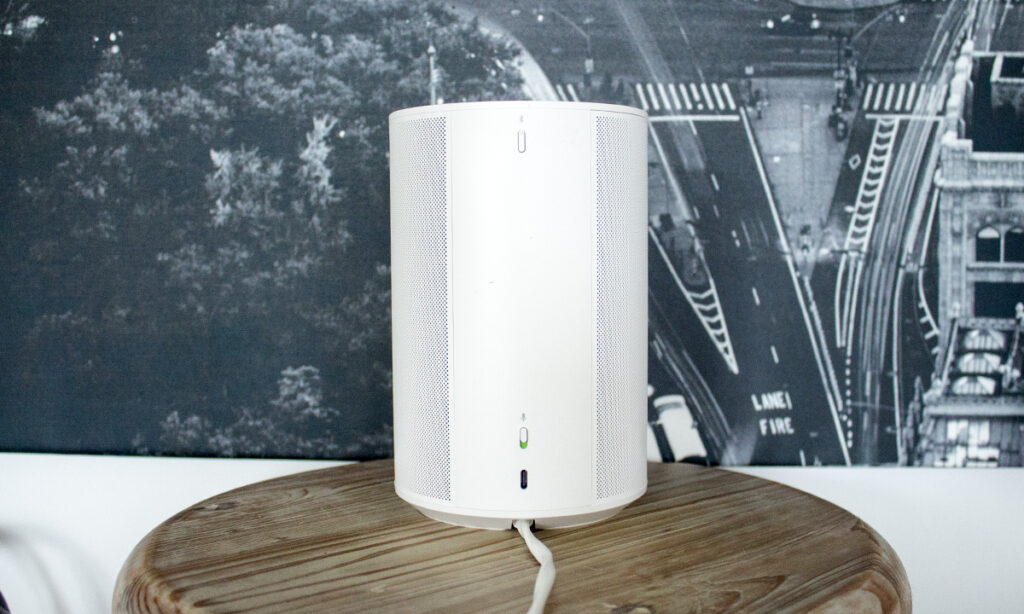
While the Sonos One and One SL share identical sound architecture, mirroring that of the 2013 Sonos Play:1, the Era 100 deviates entirely, boasting a distinct internal upgrade. Despite both delivering impressive sound from compact builds, the Era 100 features three Class-D drivers, two dual-angled tweeters, and a larger mid-woofer – 25 per cent larger than the Sonos One and One SL. The Era 100 also houses a 47 per cent faster processor, enhancing performance and ensuring compatibility with future software updates.
Setting itself apart further – and this part is key – the Era 100 provides stereo sound as opposed to mono, allowing users to stereo pair two Era 100 speakers for an enriched surround experience. The Sonos One and One SL meanwhile, incorporate two Class-D drivers, a single tweeter, and a mid-woofer, resulting in one less driver and tweeter compared to the Era 100. Both the Sonos One and One SL deliver mono sound, yet you can combine two units for stereo output.
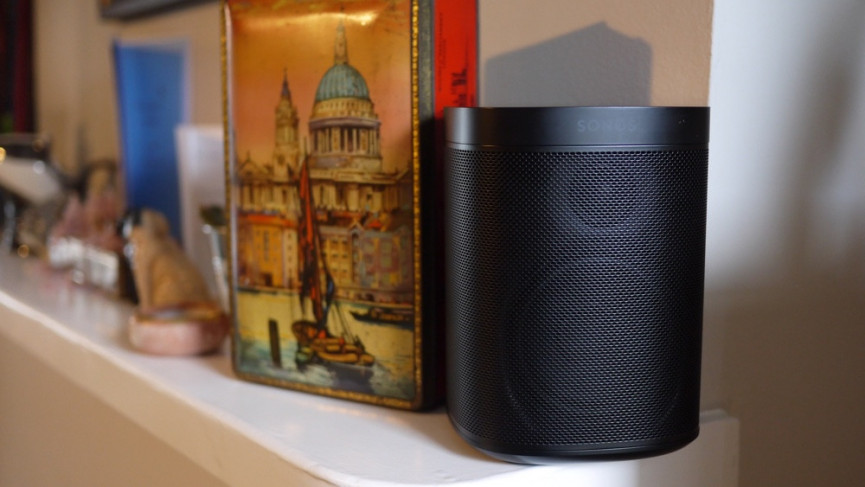
Notably, it’s crucial to recognise that you cannot combine a Sonos One or One SL with an Era 100 for stereo pairing. If you were contemplating adding another One or One SL to stereo pair with an existing unit, this option is not feasible with the Era 100.
Sonos Era 100 vs Sonos One: Which should you buy?
Despite being several years old, the Sonos One and One SL remain exceptional speakers, delivering impressive sound in a compact format. With the Era 100’s launch, you might find these older models at a compelling price – act quickly if you spot a deal – but it is more likely you will struggle to find them at all now.
The Era 100 replaces the reliable Ones with enhanced processing power, a modern design, and an overall improved sound experience. Introducing features like USB-C line-in, Bluetooth capabilities, and Trueplay for Android users, it surpasses the One and One SL on paper and in real-world experience, albeit without Google Assistant.
If you’re starting a Sonos system from scratch, the Sonos Era 100 is by far the superior choice. For those expanding an existing system with a Sonos One or One SL, you could consider grabbing an additional unit for stereo pairing or simply enhancing your setup at a favourable price, but be prepared for them to be difficult for you to get your hands on.
Both options will no doubt satisfy, but the Era 100 offers greater longevity and if your budget permits, it’s definitely our preferred choice for an enhanced Sonos experience.
FAQs
Yes, like the Sonos Move and Roam speakers, the Era 100 has a Bluetooth mode.
No, the Sonos One essentially replaced the Play:1… and the Era 100 could well be the One’s replacement.
Both the Sonos One and the Era 100 have Alexa built in.







